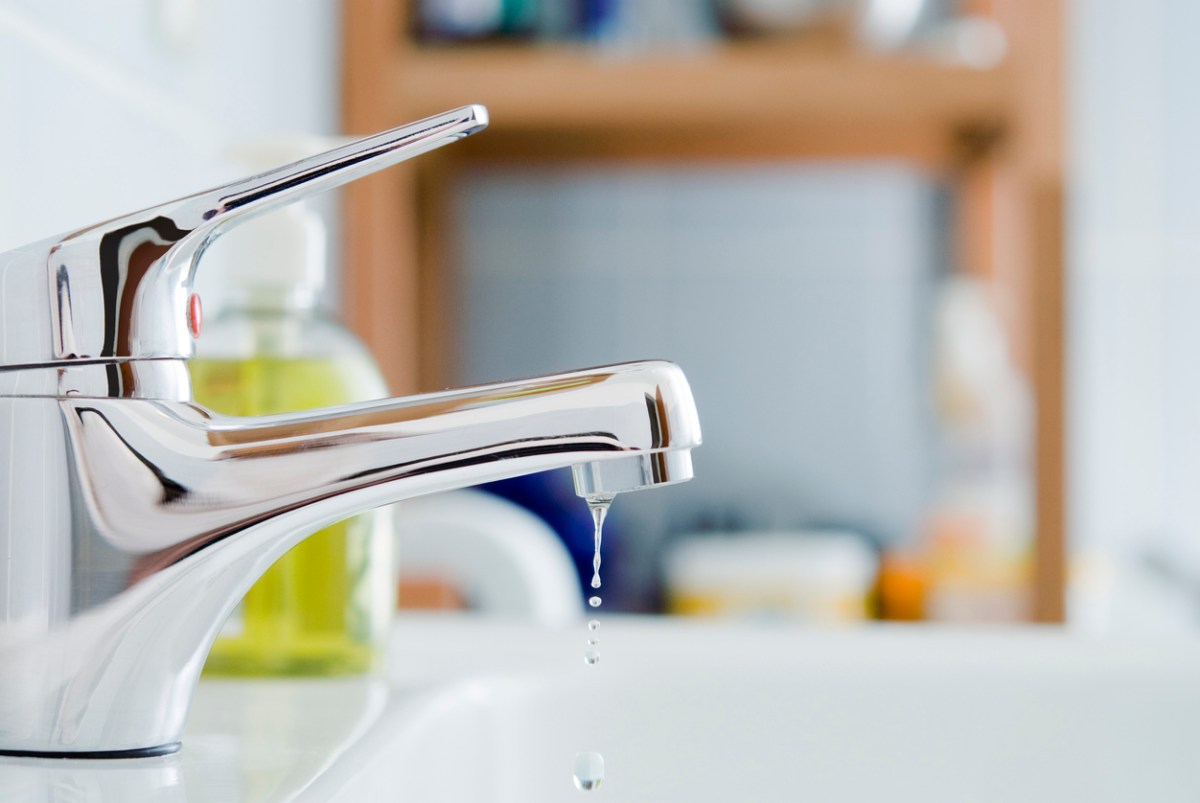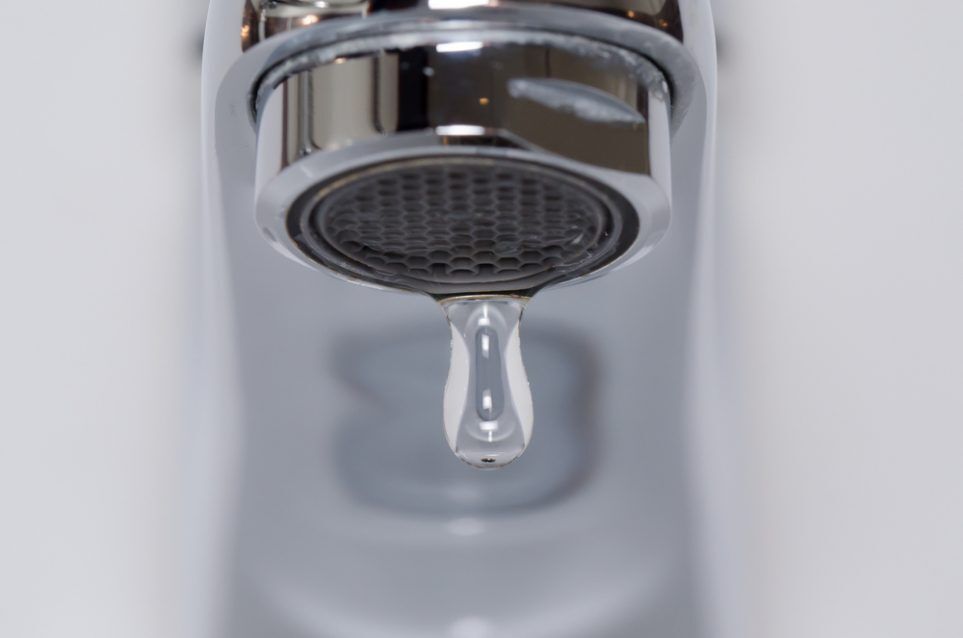How It's Important to Deal with a Dripping Faucet
How It's Important to Deal with a Dripping Faucet
Blog Article
We've come across this great article involving Should I Repair or Replace a Leaky Faucet? below on the internet and concluded it made sense to write about it with you on my blog.

Dripping taps could feel like a minor inconvenience, but their influence exceeds just the aggravation of the audio. From drainage to incurring unneeded financial prices and health threats, disregarding a dripping tap can cause different effects. In this short article, we'll look into why it's essential to address this usual home concern quickly and effectively.
Waste of Water
Environmental Effect
Dripping faucets add substantially to water waste. According to the Epa (EPA), a single tap trickling at one drip per second can squander greater than 3,000 gallons of water per year. This not only stress water sources yet also impacts ecosystems and wildlife based on them.
Financial Expenses
Raised Water Costs
Past the ecological influence, trickling taps can blow up water bills considerably. The gathered wastefulness with time converts right into higher utility expenses, which can have been stayed clear of with prompt repair services.
Prospective Residential Property Damage
Furthermore, long term trickling can result in harm to fixtures and surface areas surrounding the faucet. Water build-up can cause discoloration, rust, and even architectural problems if left unattended, leading to added repair work expenses.
Health Issues
Mold and Mildew Development
The consistent existence of moisture from a trickling tap creates an excellent setting for mold and mildew and mold growth. These fungi not just endanger interior air quality but likewise posture health risks, especially for people with respiratory conditions or allergies.
Waterborne Conditions
Stagnant water in dripping faucets can become a breeding place for microorganisms and various other microorganisms, boosting the danger of waterborne diseases. Contaminants such as Legionella microorganisms grow in stationary water, potentially leading to major illnesses when consumed or inhaled.
DIY vs. Specialist Repair service
Advantages and disadvantages of DIY Repair Service
While some may try to take care of a trickling tap themselves, DIY fixings include their very own set of difficulties. Without proper understanding and devices, do it yourself attempts can worsen the concern or result in incomplete repair work, lengthening the problem.
Benefits of Employing a Specialist Plumber
Working with a professional plumber guarantees that the underlying root cause of the trickling tap is dealt with successfully. Plumbings possess the expertise and devices to diagnose and fix tap problems efficiently, saving time and reducing the danger of additional damage.
Step-by-Step Overview to Dealing With a Dripping Faucet
Devices Called for
Before attempting to fix a dripping faucet, collect the essential tools, consisting of an adjustable wrench, screwdrivers, substitute parts (such as washing machines or cartridges), and plumber's tape.
Typical Faucet Issues and Their Solutions
Recognize the type of tap and the particular concern triggering the drip. Usual issues include damaged washers, rusty shutoff seats, or defective O-rings. Describe producer directions or on-line tutorials for step-by-step support on repairs.
Preventive Measures
Routine Upkeep Tips
To stop dripping faucets, carry out regular upkeep such as cleansing aerators, inspecting for leaks, and replacing worn-out parts quickly. In addition, take into consideration mounting water-saving tools or updating to extra reliable components.
Value of Prompt Fixes
Attending to leaking faucets as soon as they're discovered avoids further water wastefulness and prospective damage, inevitably conserving both water and money in the future.
Effect On Building Value
Understanding of Well-Maintained Home
Maintaining a property in good condition, including resolving maintenance concerns like dripping faucets, boosts its perceived value and worth among possible buyers or tenants.
Impact on Resale Worth
Characteristics with well-kept plumbing components, consisting of faucets, command higher resale values in the real estate market. Addressing dripping faucets can contribute to a positive perception throughout property inspections and negotiations.
Environmental Obligation
Individual Payment to Preservation
Taking obligation for taking care of leaking faucets lines up with wider initiatives toward water preservation and environmental sustainability. Every person's actions jointly make a significant influence on preserving valuable sources.
Sustainable Living Practices
By focusing on prompt repair services and adopting water-saving behaviors, people contribute to sustainable living techniques that profit both present and future generations.
Conclusion
Attending to a trickling faucet goes beyond mere comfort; it's an important step toward saving water, lowering economic prices, and safeguarding health and residential property. Whether via do it yourself repair services or expert help, acting to repair leaking faucets is a tiny yet impactful method to promote responsible stewardship of sources and add to a much healthier, more sustainable future.
Most Common Reasons for a Leaky Faucet and How to Stop the Drip
Whether it’s your kitchen faucet leaking or a bathroom faucet leaking, one leaky faucet can waste anywhere from three to 30 gallons of water every single day. If the constant drip-drip-drip doesn’t get your attention, your water bill will. The good news is that, by following a few simple steps, chances are pretty good you can fix the problem yourself.
Why is it dripping?
Before you start taking things apart, let’s break down some of the most common causes of a leaky faucet.
Bad O-ring.
A cartridge is a valve that controls the flow of water into the faucet spout. On cartridge faucets there’s an O-ring—the little disc attached to the stem screw that holds the faucet handle in place. If it’s loose or worn-out, it can cause your sink handle to leak. Of course, the cartridge itself could be worn out. If that’s the case, make sure you replace it with the exact same kind.
Corroded valve seat.
The valve seat connects the faucet and the spout. If the leak seems to be coming from the spout, it might be because a buildup of water sediment has corroded the valve seat.
Worn-out washers or seals.
A leaky spout could be caused by a bad washer that rests against the valve seat. It’s just a matter of time before friction takes its toll. It could also be the wrong size washer or one that’s been installed incorrectly. Water sediments can also corrode inlet and outlet seals.
Water pressure.
If the faucet only drips now and then, or when you turn the handles a certain way, you should probably check your home’s water pressure.
Loose or broken parts.
The adjusting ring and packing nuts in the stream screw can become loose over time, causing your sink handle to leak. Try tightening or replacing the packing nut. If the leak is coming from the pipes underneath the sink, you probably have a broken pipe or fitting. If that’s the case, you should definitely call a plumber.
Know your faucet.
Faucets come in a variety of types. Each one has its own assembly—and its own possible causes of leaks. Learning about the four most common kinds of faucets will help you know how to take them apart and make any repairs.
How to stop a leaky faucet
Fixing that leaky faucet doesn’t have to take a lot of time, money, or expertise. It’s usually a simple matter of replacing a worn-out washer or gasket, a loose O ring, or another part. Chances are really good you can do this yourself if you follow these simple steps.
Shut off the water.
Before you tackle the faucet, cut off the water supply to the sink. There should be one valve for hot and one for cold. Hand-turn them clockwise with your hands till they close. If there are no valves under the sink, head to the basement and shut off the main water supply to the house. Then turn on the faucet until it empties out the water that’s still in the line and you’re ready to start. It’s a good idea to cover the sink drain with a plug or a rag so you don’t lose any small pieces and parts while you’re working.

As an avid person who reads about Water Dripping from Faucet: Why and How to Fix, I figured sharing that chunk was a good idea. You should set aside a second to distribute this post if you enjoyed reading it. Thank you so much for going through it.
Report this page